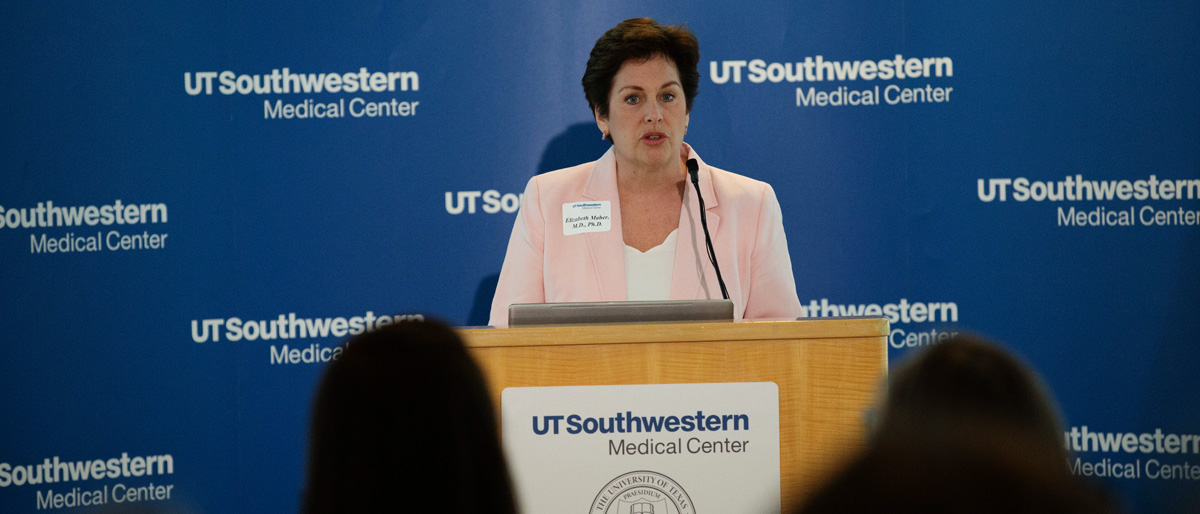UT Southwestern scientists test new strategies to attack brain cancer cells

Dr. Elizabeth Maher foresees a day when brain cancer no longer amounts to a death sentence. She anticipates a time when vaccines might prevent the entire ordeal. Her optimism stems from the crucial insight scientists are gaining into the common vulnerabilities of cancer cells – among them, their need for sugars and fats for fuel and their predictable locale in the brain while dormant.

Every tumor is unique, but there are common themes,
Dr. Maher said March 21 during a presentation at the Carolyn P. Horchow Women’s Health Symposium. Our goal is to identify and target these shared weaknesses.
Dr. Maher, an oncologist who specializes in brain tumors, was the final speaker at the annual campus event that this year included lectures from several doctors from UT Southwestern Medical Center’s Peter O’Donnell Jr. Brain Institute.
She explained the notable progress in cancer treatment and research, including new technologies that have enhanced brain imaging and drug-testing capabilities. Although such improvements have contributed to a 25 percent drop in the U.S. cancer death rate since the early 1990s, Dr. Maher acknowledged the medical field has much work remaining to achieve the ultimate goal of prevention.
We have to do the thinking upfront and be smarter in our approaches,
said Dr. Maher, Professor of Internal Medicine and Neurology and Neurotherapeutics who also directs UT Southwestern’s translational research program in Neuro-Oncology, part of the Annette G. Strauss Center for Neuro-Oncology. One day we will vaccinate for cancer, and I intend for it to be in my lifetime.
She elaborated on the difficulties of treating glioblastoma, an aggressive brain cancer that – even with the standard treatment of chemotherapy and radiation – has short survival for many patients. The disease isn’t curable through surgery because the tumors cells don’t grow as a lump; instead they migrate into the normal brain. As much as the surgeon can remove, there are always cells beyond the surgical margin.
But scientists are testing new strategies that utilize insight into how and when cancer cells migrate and divide. Part of the effort includes using imaging to improve treatment, in particular tracking the chemical signature of cancerous cells to detect their location and reaction to various drugs.
Dr. Maher cited two major research projects at the O’Donnell Brain Institute and Harold C. Simmons Comprehensive Cancer Center that may lead to potential therapies: One is focused on finding ways to remove the sugar and fats that cancer cells feed on while dormant; the second involves understanding how the cells move in the tight spaces of the brain, developing an intricate system in the laboratory that mimics these spaces and testing drugs that could attack the cells while they are moving.
The imaging shows these cells hiding in plain sight,
she said. The problem is, we don’t yet know how to kill them when they’re dormant and not dividing.
Dr. Maher is hopeful a solution may be found in the lab, aided by technology that enables scientists to do large-scale testing of various pharmaceutical combinations taken from a library of 3,000 government-approved drugs and another 250,000 compounds.
What drugs kill the cells when they’re dormant? Which ones kill dividing cells?
Dr. Maher asked. Maybe there’s a drug at your local pharmacy right now that can help. We need to keep looking and we need the answers quickly.
Dr. Maher holds the Theodore H. Strauss Professorship in Neuro-Oncology.

